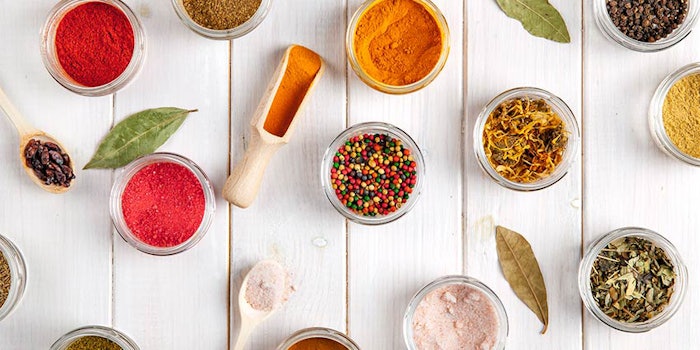
The global flavor enhancers market, valued at $6.6 billion in 2019, is expected to reach $11.5 billion by 2027, growing at a CAGR of about 6.5%, according to the analysis of Reports and Data.
The Food and Drug Administration (FDA) considers flavor enhancers, or flavor potentiators, to be the substances that have no pronounced flavor or taste of their own but which bring out and improve the flavors in the foods to which they are added. The most commonly used substances in this category are monosodium L-glutamate (MSG), disodium 5′-inosinate (IMP), and disodium 5′-guanylate (GMP).
Segment growth is driven by the expansion of the global beverage industry, an increase in demand for convenience food, changing consumer lifestyle and an increase in the number of sensory-oriented consumers worldwide.
The global flavor enhancers market is expected to witness an upsurge owing to the introduction of new food products with natural ingredients and coloring pigments. Furthermore, technological advancements, growing demand for clean label products, and stringent regulations on synthetic enhancers are influencing manufacturers to incorporate more natural flavors in their offerings.
Increasing the use of natural flavor enhancers by the food processing industry is a key factor driving the flavor enhancers market’s growth.
However, factors such as mounting raw material prices and high entry barriers and price pressure on manufacturers due to consolidation affect the industry’s growth. Major trends prevailing in the market are consolidation in the industry, demand for substitutes for artificial flavor enhancers, the emergence of biotech flavor enhancers and sensory trends.
- The global flavor enhancers market is segregated based on type glutamates, acidulants, hydrolyzed vegetable protein, yeast extracts and others (sweetness enhancers and nucleotides).
- Based on form, the global flavor enhancers market is segmented in powder and liquid and semi-liquid.
- Based on source, the market is segmented into natural and synthetic.
- Based on application, the market is bifurcated into processed and convenience foods, meat and fish products, beverages and others (confectionery products, bakery, dairy and condiments).
The glutamates segment was valued at $1.36 billion in 2019. Asia is the largest producer of glutamates, including MSG, accounting for approximately 93% of the global MSG production capacity.
Among the application segments, processed and convenience foods occupied a significant share of about 38.3% in the flavor enhancers market. Flavor enhancers like lactic acid find extensive application in the processed and convenience food industry as it benefits from regulating microflora in the food and acting as preservatives. It is formed by the natural fermentation process in food products such as pickled vegetables, cheese and soy sauce.
The natural segment is growing at a rapid CAGR of 6.8%. The snowballing health awareness among the population and the rising demand for organic foods and upsurge in the buying power of the population fosters the market growth.
By form, the liquid segment is projected to grow at the fastest CAGR 6.5% during the analysis period. Factors such as minimized ingredient loss, high consistency and uniformity, specification-oriented superior quality production and excellent microbiological safety drive the market.
North America occupied a share market share of about 33.5% in 2019 in the flavor enhancers market. Established key market players and continued investments from manufacturers are likely to drive market growth in North America during the forecast period.
The key players in the market include Tate & Lyle PLC, Cargill, Corbion N.V., Associated British Foods plc, Sensient Technologies, ADM, Novozymes A/S, E.I. Dupont, Angel Yeast Co., Ltd, Innova Flavors, Savoury Systems International, Inc., Senomyx, Inc and Ajinomoto Co, Inc.










